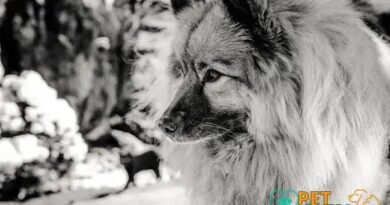What is classifying dog behavior
Understanding Dog Behavior Classification
Classifying dog behavior is an essential aspect of understanding how dogs interact with their environment and with humans. This classification helps pet owners, trainers, and veterinarians to identify specific behaviors that can indicate a dog’s emotional state, health, and overall well-being. By categorizing behaviors, we can better address issues such as aggression, anxiety, or fear, leading to more effective training and care strategies.
The Importance of Behavior Assessment
Assessing a dog’s behavior involves observing various actions and reactions in different situations. This process is crucial for identifying patterns that may suggest underlying problems. For instance, a dog that frequently barks at strangers may be exhibiting territorial behavior, while one that hides during thunderstorms may be showing signs of anxiety. Understanding these classifications allows for tailored interventions that can improve a dog’s quality of life.
Types of Dog Behavior Classifications
Dog behaviors can be broadly classified into several categories, including social behaviors, aggressive behaviors, and fearful behaviors. Social behaviors encompass actions like wagging tails and playfulness, indicating a friendly demeanor. Aggressive behaviors, such as growling or lunging, may signal discomfort or a threat response. Fearful behaviors, including cowering or avoiding eye contact, often indicate anxiety or stress. Recognizing these classifications is vital for effective training and socialization.
Factors Influencing Dog Behavior
Several factors influence dog behavior, including genetics, environment, and socialization experiences. For example, a dog’s breed can predispose it to certain behaviors, such as herding instincts in Border Collies. Additionally, a dog’s upbringing and exposure to various stimuli during its formative months can significantly impact its behavior. Understanding these influences is key to classifying and addressing behavioral issues effectively.
Behavioral Signs of Stress in Dogs
Identifying stress in dogs is crucial for their well-being. Common signs include excessive barking, panting, pacing, and destructive behavior. These behaviors can indicate that a dog is overwhelmed or anxious, necessitating a closer look at its environment and routine. By classifying these stress-related behaviors, owners can implement changes to create a more comfortable living space for their pets.
Training Techniques Based on Behavior Classification
Once behaviors are classified, appropriate training techniques can be applied. Positive reinforcement is often effective for encouraging desired behaviors, while desensitization techniques can help address fearful or aggressive behaviors. Understanding the classification of a dog’s behavior allows trainers to choose the most effective methods tailored to the individual dog’s needs, fostering a more harmonious relationship between the dog and its owner.
The Role of Professional Behaviorists
Professional dog behaviorists play a crucial role in classifying and addressing behavioral issues. These experts utilize their knowledge of canine behavior to assess and develop tailored training plans. They can help identify the root causes of problematic behaviors and provide strategies to modify them effectively. Collaborating with a behaviorist can be particularly beneficial for owners facing challenging behavioral issues.
Monitoring Changes in Dog Behavior
Monitoring changes in a dog’s behavior is essential for maintaining its health and happiness. Sudden shifts in behavior can indicate underlying health problems or changes in the dog’s environment. Regular observation and classification of behaviors can help owners detect these changes early, allowing for timely intervention and care. Keeping a journal of behavioral patterns can be a useful tool for tracking these changes over time.
Conclusion: The Ongoing Journey of Understanding Dog Behavior
Classifying dog behavior is not a one-time task but an ongoing journey that requires patience and dedication. As dogs grow and their environments change, their behaviors may also evolve. By continually observing, classifying, and adapting training techniques, owners can foster a deeper understanding of their canine companions, leading to a more fulfilling and harmonious relationship.




